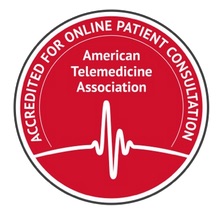 The American Telemedicine Association today rolled out a new service for accrediting live, direct-to-consumer telemedicine services. Applications open today for ATA members and will be available for nonmembers in the coming months.
The American Telemedicine Association today rolled out a new service for accrediting live, direct-to-consumer telemedicine services. Applications open today for ATA members and will be available for nonmembers in the coming months.
"We also very strongly support the accreditation programs operating in the hospitals and that’s an important role," ATA CEO Jonathan Linkous told MobiHealthNews in an interview. "But in this segment where you go direct-to-consumer, that’s an area that’s kind of wide open and really important for us to help separate the wheat from the chaff and establish some guidelines."
The accreditation program will focus specifically on direct-to-consumer services that involve live doctor-patient interaction, Linkous said, whether that be phone or video-based. It won't cover email consultations or pure store-and-forward plays like certain dermatology apps. The purpose will be to assure consumers and payers that the services are meeting some basic requirements for safe and responsible practice.
"We want to make sure that the customer or patient is informed of the rules of the site," Linkous said. "Who the providers are, how the site works, what they can expect in terms of services, and some idea of the costs. ... There ought to be some way for consumers to know what they’re getting and also they need to know that who they’re dealing with is a trusted source, that they’re licensed providers that are operating in the rule of law. ... They need to have something in place, some efforts to work toward quality -- some form of review of the quality control for the site. And we need to know they have some form of record they’re maintaining and if they can provide that information to the primary care physician of the patient."
The ATA has been working on the program for about a year-and-a-half and already has the support of a number of provider groups, payers, and regulators. The latter two are important partners because they will incentivize vendors to get the certification.
"We know that there are payers who will be using this," he said. "We know that there are some regulators in the medical boards who have had an interest in making sure everyone who practices in their state has to go through this process. So we think they’re going to have widespread appeal. We talked to a lot of providers about this, and there’s pretty much universal support."
A consumer site is also under development, in the hopes that the ATA seal will be useful for them as well, as something akin to the Better Business Bureau's grades. Linkous also hopes that the accreditation program will give ATA a lever to nudge these companies to do better and have higher standards for care as time goes on.
The service will extend only to businesses that target patients in the US, with an expansion into Canada planned for the near future.
"If you’re located in some other country but providing services in the US you are eligible because you have to follow US law," Linkous explained. "But we’re not talking about a program in Singapore providing services to people in Singapore."
Linkous sees this not as a radical departure, but as an extension of the work the ATA was founded to do.
"We’ve been doing practice guidelines for probably 15 years or more," he said. "We came out with probably a dozen practice guidelines, and many of them have been endorsed and many of them appear in medical board regulations. We’ve been doing this for a long time and this is kind of a natural outgrowth of a lot of the work we've been doing."
















